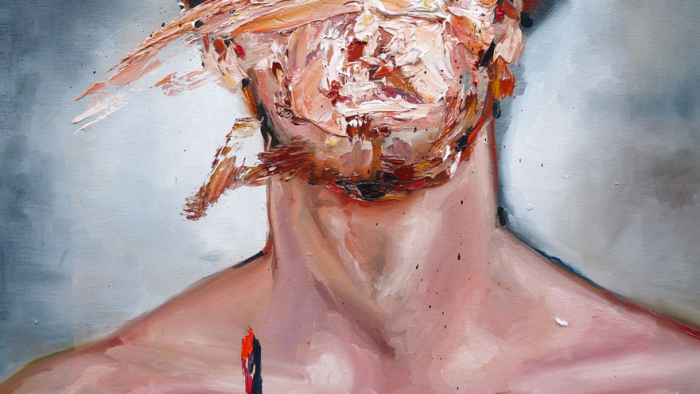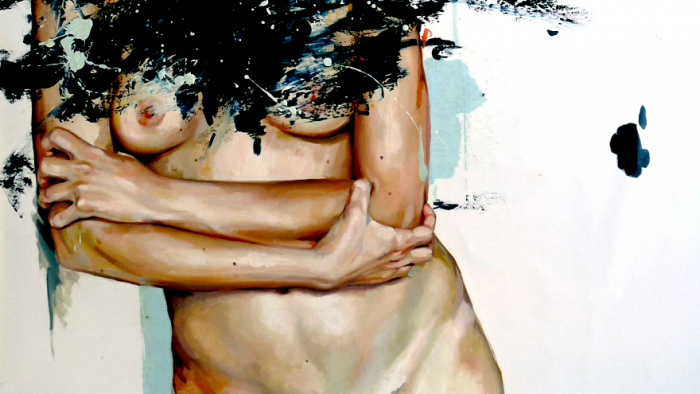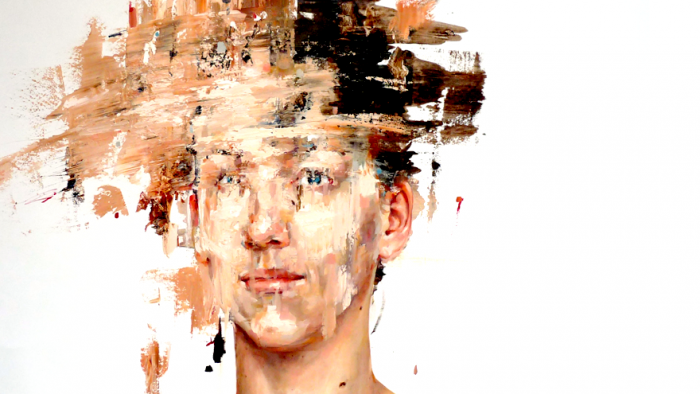Cesar Biojo is a young visual artist based in Barcelona, Spain. He creates figurative paintings with an element of damage; a kind of visual destruction that forms the basis of his artistic concept.
We asked the artist about the method behind his madness. Does the visual injury of his paintings represent something real about humanity?
“During my student years, I did all the wondering and experimentation that every student does and should do. I went through a period where I refused to paint in a figurative style because it was only a display of talent and the true form of "reality" must be something abstract to the human brain. Later, I felt that in order to study human nature, I had to use the body as a reference to address the subject.
So I went back to figurative painting, but the result of it was the very thing I wanted to avoid – a display of talent and nothing more. Being terribly frustrated with this, I ran a spatula through the painting to start it over – and the result was a phantasmagorical image of a human being that was there and at the same time, was not there. I fell in love with the idea of creating a character to later destroy it, leaving behind only evidence.
I became addicted to the necessity of partially erasing my characters. I feel it is the most respectful, sensible and accurate representation of human nature,” Biojo said.
On describing the process that takes place in the creation of his paintings, the artist said, “I start by taking tonnes of pictures of a subject. Photography is key for me because it allows me to capture the ephemeral instant. It freezes the subject eternally in an action that will later be painted and destroyed leaving behind only evidence of it. I find it a beautiful metaphor of existence itself.
I select the photograph that I am going to paint and place my laptop next to my easel. I started painting from Photoshop in my early years because by saturating specific colours, it allowed me to perceive what I could not see in the picture. With time I learned to do this with my eyes, but I continued using the computer as a reference since it allows me to zoom, preview colour filters and so on.
I paint the entire subject up to maybe 70 per cent of completion. Then “the accident” comes in form of spatula distortion, an excess of paint, splatters, etc. Then, whatever survives, I proceed to finish painting the remaining 30 per cent of the process.”
He added, “The moment of destruction is the most exciting, yet the most excruciating part of my life. That second when the spatula determines the future of a painting in just one blink is like life or death. I define my work as the result of multiple controlled accidents. Sometimes I am tempted to leave it as it is, but again find it disrespectful to the person I depict. Furthermore, what a better, more beautiful metaphor for life than the action of overcoming obstacles?”
Returning to the duality of creation and destruction, Biojo explains that his method has become a valuable perspective on life.
“The idea of creation and destruction is an ever-present subject in every culture as a cyclical depiction of existence. I have not yet come to a conclusion on the subject, but I do believe that in order to define something, the opposite force must be considered into the equation. The colour white defines the colour black, borders define a country, beliefs define identities, death defines life, and so on.
I think that a “perfect” painting of a human being seems irresponsible and disrespectful for me. The person I paint has virtues and flaws, positives and negatives that have an influence on their lives. Time will pass for them and death will eventually come. To freeze them in a tabloid, without a mere glimpse into their ephemeral nature would be, for me, a sacrilege to their existence.”
View the video below by Elgatovisual to see Cesar Biojo in action inside his studio.
















